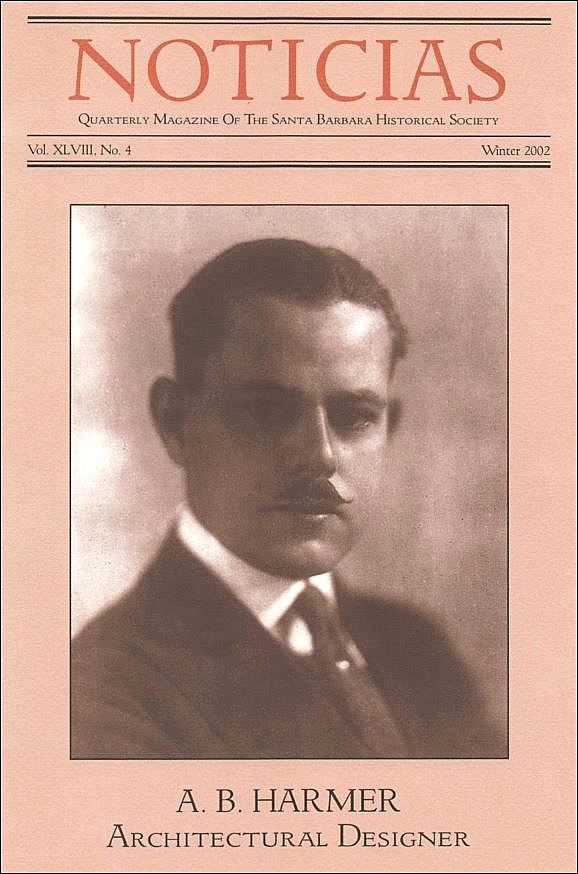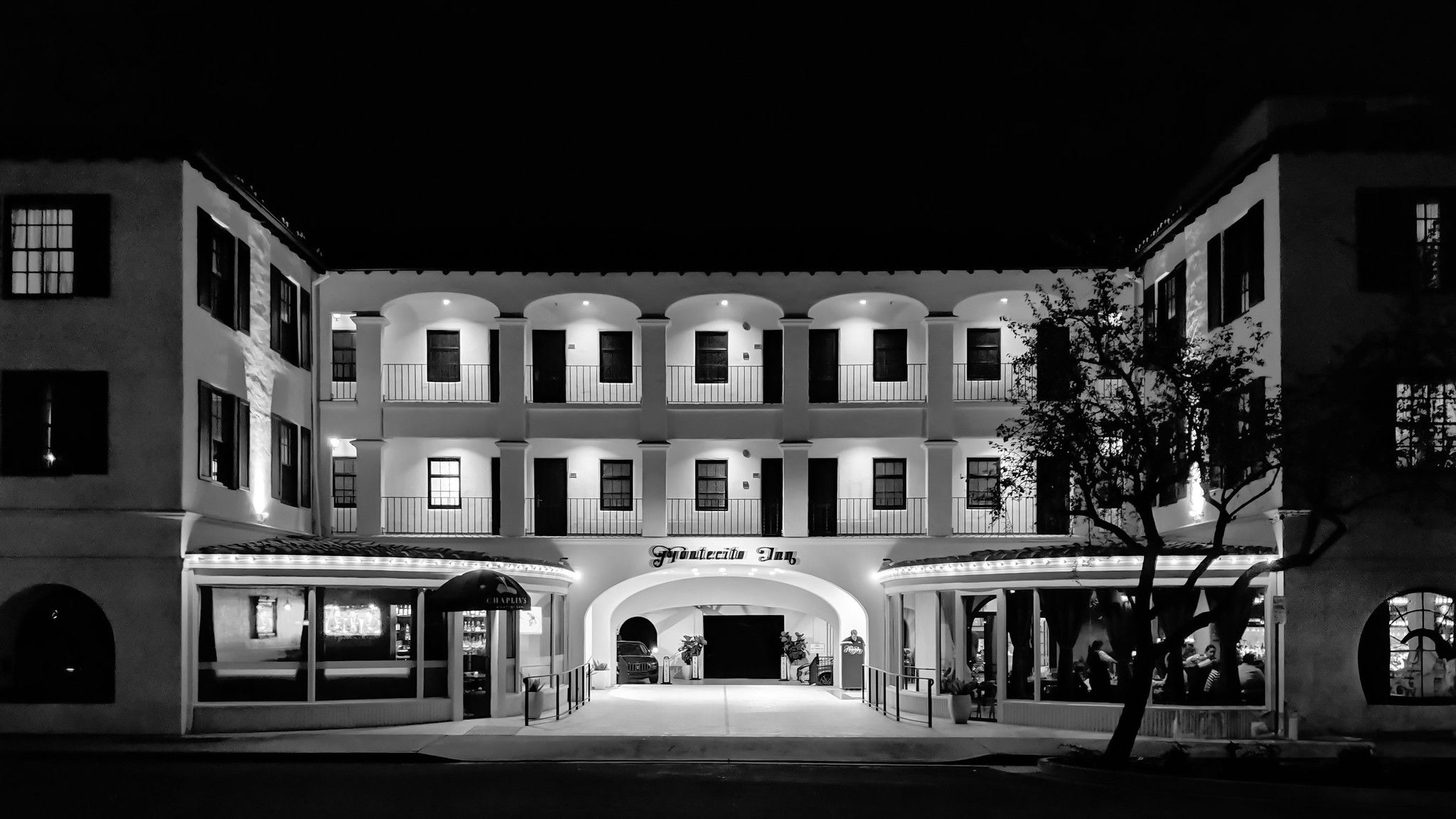
Early Life and Self-Education
A.B. “Bert” Harmer, born in Newark, New Jersey, in 1896, was raised in an artistic family in Santa Barbara, where he developed the creative instincts that would later shape his work. The details of his early life and architectural training differ, yet one thing remains clear—his passion for design emerged at a young age. Although he did not pursue formal architectural education, his passion for design and sharp observational skills allowed him to hone his craft through hands-on experience and collaboration, working alongside some of the most renowned architects of his time. By his teenage years, Harmer was already demonstrating exceptional architectural talent, laying the foundation for what would evolve into a distinguished career.
Professional Collaborations and Signature Style
The young Harmer formed partnerships with Wallace Neff and other highly respected professionals in the field, which allowed him to refine his skills and gain insight into evolving architectural trends. He specialized in Spanish Colonial Revival homes, focusing primarily on single-story designs that seamlessly blended with the California landscape. As his career progressed, he expanded his portfolio to include large, complex projects.

Notable Works
Montecito Inn
One of Harmer's most significant works is the Montecito Inn, designed in 1927 and commissioned by the legendary silent film star Charlie Chaplin, along with a group of investors. It was their vision to create a luxurious coastal retreat for Hollywood’s elite. Nestled in picturesque Montecito, adjacent to Santa Barbara, the hotel quickly became a glamorous destination for the well-known and well-heeled: celebrities and business tycoons seeking refuge from the hustle and bustle of Los Angeles, Chicago, and points East.
The hotel’s design exemplifies the refined Spanish architectural gaining popularity at the time, with its red-tile roofs, stucco walls, arched doorways, and intricate wrought-iron detailing. Harmer’s craftsmanship shines through in his careful attention to detail, from the lush landscaped courtyards to the ornate interior spaces. Also reflected is the Santa Barbara area’s Spanish heritage. The inn’s grand yet inviting aesthetic creates a perfect harmony of opulence and comfort, providing a sophisticated yet relaxed ambiance.
The inn's strategic location within the natural beauty of the coastline and backdrop of Montecito’s tranquil hills offered guests the perfect escape from their busy lives. In no time, the Montecito Inn evolved into a social hub, showcasing its stylish dining room, luxurious accommodations, and exceptional service. Over the years, it hosted numerous glamorous gatherings, becoming a symbol of Hollywood’s golden age.
Today, even with modern updates and renovations, the hotel has maintained much of its historic charm and elegance. It stands as a cherished landmark and a lasting testament to Harmer’s architectural vision, craftsmanship, and standing among distinguished Santa Barbara architects.
4.jpeg)
Montecito Fire Station
Harmer left a lasting imprint on the community’s built environment In addition to numerous private residences and an upscale inn. One standout example is the Old Montecito Fire Station on East Valley Road, a structure that now serves as RH Montecito, the Gallery at the Old Firehouse, a luxury furniture showroom. Though repurposed, the building retains its architectural integrity, and is a testament to Harmer’s enduring design principles. The building not only complemented the region’s Mediterranean-inspired landscape, it also ensured that essential public buildings harmonized with Montecito’s overall architectural identity.
Our Lady of Mount Carmel Church
Harmer also designed a wing addition to Montecito’s revered Our Lady of Mount Carmel Church. His architectural extension blended seamlessly with the original mission-style chapel, enhancing its spiritual and historical significance. The building remains a cherished part of the community, and Harmer’s thoughtful expansion enabled it to accommodate more worshippers while preserving its traditional aesthetic.

Residential Works
Harmer's portfolio showcases numerous private residences, many of which remain enduring examples of his architectural expertise, which was on a par with other noted Santa Barbaara architects of the time. The classic hacienda at 929 Canon Road, constructed in Hope Ranch in 1928, is considered one of his finest residential creations. Set on approximately 1.4 acres, the authentic and elegant adobe hacienda captures the timeless beauty of Spanish-style architecture. Featuring a central courtyard, a terraced yard with a sandstone pool, and mature oak trees, the design highlights Harmer's skill in creating homes that harmonize with their natural surroundings while maintaining an air of elegance and sophistication.
The 1939 Spanish compound at 460 El Cielito Road in Santa Barbara exemplifies his skill in blending historical authenticity with timeless elegance. His homes feature the red-tiled roofs, white stucco walls, intricate wrought-iron details, and carefully landscaped gardens that are hallmarks of the Spanish Colonial Revival style.
Harmer's Legacy
A.B. Harmer's story is one of quiet brilliance. Although he may not have received the widespread recognition that some of his peers have, his architectural contributions have made an undeniable impact on Montecito and Santa Barbara. His work continues to inspire admiration and appreciation, especially among those who recognize the beauty and significance of Spanish Colonial Revival architecture. There is much more interesting information about A.B. Harmer in an article in Noticias, a quarterly publication of the Santa Barbara Historical Museum.
My current and recently sold Santa Barbara, Montecito, and Hope Ranch listings include several architectural treasures by noted Santa Barbara architects such as A.B. “Bert” Harmer. I invite you to explore them on my comprehensive website. If you see something you love, feel free to contact me at (805) 886-9378 or Cristal@montecito-estate.com for a complimentary consultation.
Of Related Interest: